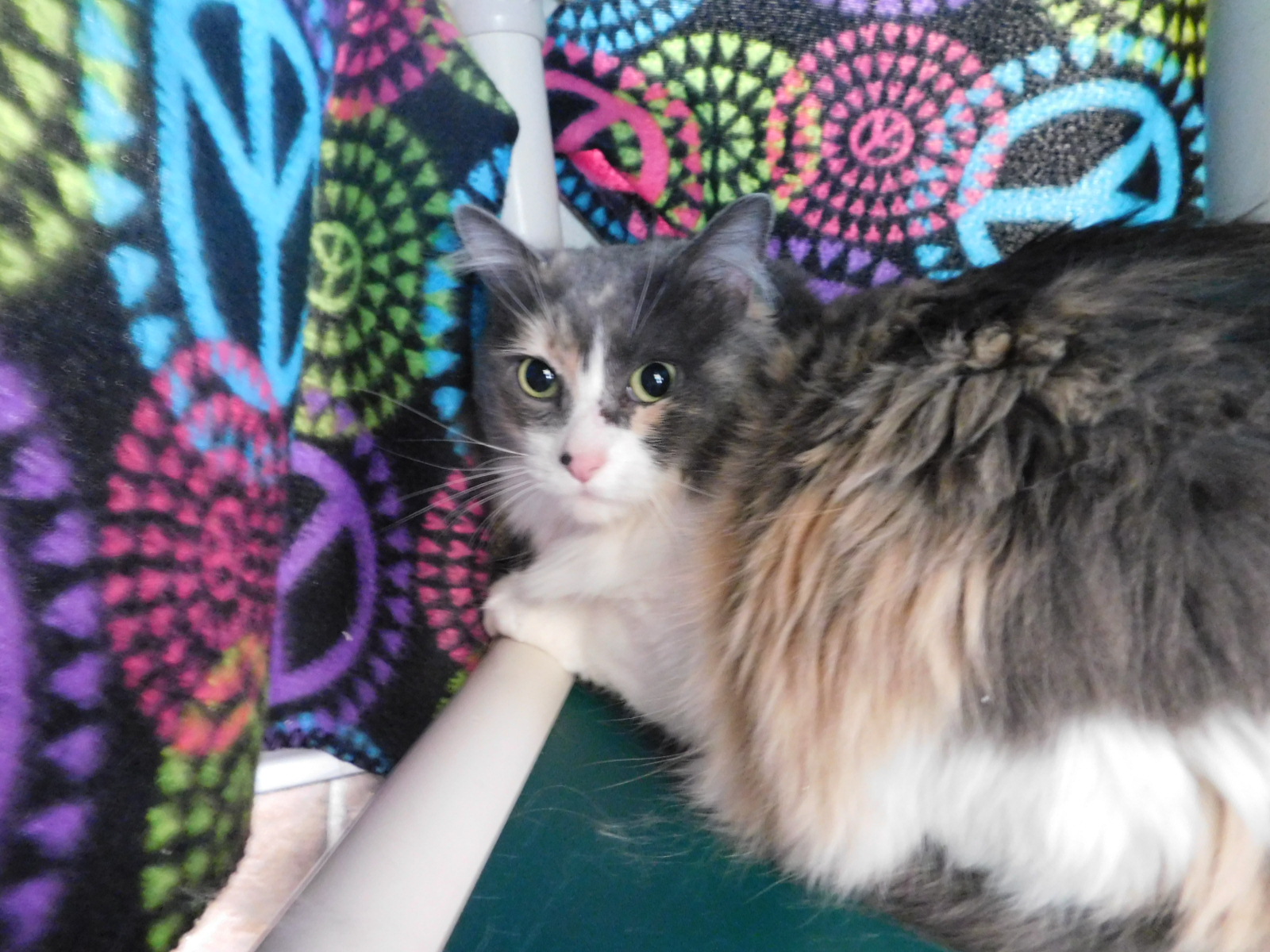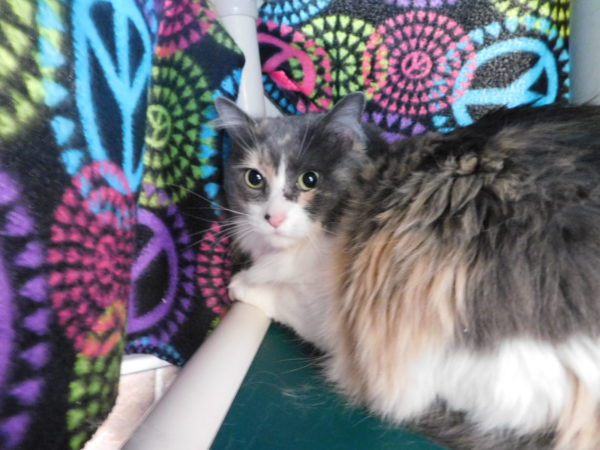
18 Apr Second Chance: Sleeping Purry
Dear Pet Column,
I am a new cat parent and am amazed by how much cats sleep. I wish I had the ability to fall asleep anywhere and anytime – like in the laundry bin, the closet, or on top of my dog. My cat otherwise seems healthy and happy, but how do I know if he is sleeping too much?

Bella
Let me being my response by stating that being awake is overrated.
The finely tuned skill of sleeping we cats have proudly mastered is a result of our evoution, nutritional habits and physiology. In the wild, cats have to hunt in order to eat, and the stalking, chasing and killing of prey burns a lot of energy. Sleeping helps cats conserve energy between meals. It is a survival mechanism.
I know, most domestic cats no longer have to hunt down their dinners but, before you judge us as just being opportunistic lazy beings, keep in mind that, of the time cats spend sleeping, about three-quarters is what you might call snoozing. In that state, cats can get all the rest we need, but are still alert enough to awaken at a moment’s notice.
You can tell when a cat is in light sleep because our ears will twitch and rotate toward noises and our eyes will be open a tiny bit. Even when sitting upright, cats can slip into this sleep state. I call it my Doze Mode.
Only the remaining quarter of cats’ sleeping hours are spent in deep sleep. (Older cats might spend as much as 30 percent or 40 percent of the time at that level however.)
Cats in deep sleep are usually curled up with their eyes tightly closed. Sometimes, they might even have their tail over their face, like a fluffy sleep mask. Deep sleep is critical for the body’s ability to regenerate itself and stay healthy. It’s also the time when your cat dreams. If you’ve seen your cat’s whiskers or paws twitching while he’s asleep, there’s a good chance he’s dreaming.
It is normal for cats to sleep as much as 16 hours a day; older cats spend even more time at rest, as much as 20 hours a day. If your cat starts sleeping a lot more or a lot less than usual, contact your veterinarian. Excessive sleep could be a sign of illness or pain, while frequent wakefulness can indicate a problem such as hyperthyroidism.
Otherwise, my recommendation would just be that you learn by example and curl up in the closet or laundry bin for a little afternoon snooze with your cat…
My name is Bella and I am an altitude napper because I like napping in high places. I am about six-years-young and although shy and timid at first, I do love some cuddle time with people too.
I get along well with other cats, despite my independent nature, and my favorite hobbies include finding new napping perches, practicing personal hygiene, and hopscotch. I am seeking a forever home that understands the importance of cuddle time.

Sam
Or if you are an anti-napper you may want to come meet Sam instead.
Sam is a handsome 11-month-young Golden Lab here at Second Chance. He’s extremely sweet and has the greatest temperament.
Sam is not a big napper, but he does need a lot of exercise.
Sam enjoys playing fetch and being around people and other dogs.
When he is older, I think he will learn to appreciate napping more.
Editor’s note: It’s no secret. The Telluride region is dog heaven. Well, pet heaven. Unless you are one of our furry friends who gets caught in the maw of neglect and abuse. Then heaven is on hold until Second Chance Humane Society comes to the rescue. Second Chance is the region’s nonprofit dedicated to saving animals’ lives and promoting responsible pet parenting and human-animal bond. In her weekly blog, executive director Kelly Goodin profiles at least one, generally two of the many animals now living at the no-kill shelter, Angel Ridge Shelter, a dog and a cat, hoping to find them loving permanent homes. The column is sponsored by Ted Hoff of Cottonwood Ranch & Kennel, who from time to time exercises his skills as a dog whisperer, partnering with Kelly and her staff to help train a particularly challenging animal.

Ted Hoff with Cabella & Wilbur
By the by, there is no better place to park your pup or get your pup (or adult dog) trained than Cottonwood whenever you head out of town (for locals) or are heading to town and staying somewhere that does not allow pets. Consider joining Ted’s Very Important Dog (VID) Club for added benies. (Details on Ted’s website.)
Second Chance Humane Society Animal Resource Center and Thrift Shop are both located in Ridgway, but service San Miguel, Ouray & Montrose Counties. Call the SCHS Helpline at 626-2273 to report a lost pet, learn about adopting a homeless pet, or about the SCHS Spay/Neuter, Volunteer, Feral Cat, or other Programs. View the shelter pets and services online: www.adoptmountainpets.org
Vetting the Vet: Dr. Michelle Dally, DVM, J.D. is Medical Director of Second Chance Humane Society. She also has a private practice, Dally Veterinary Medicine, 333 S. Elizabeth Street, Ridgway, Colorado. Her service area is San Miguel Mesas, Placerville, Ridgway, Ouray, and Montrose. For more on Dr. Dally, go here.

Michelle & Wallowby


Sorry, the comment form is closed at this time.